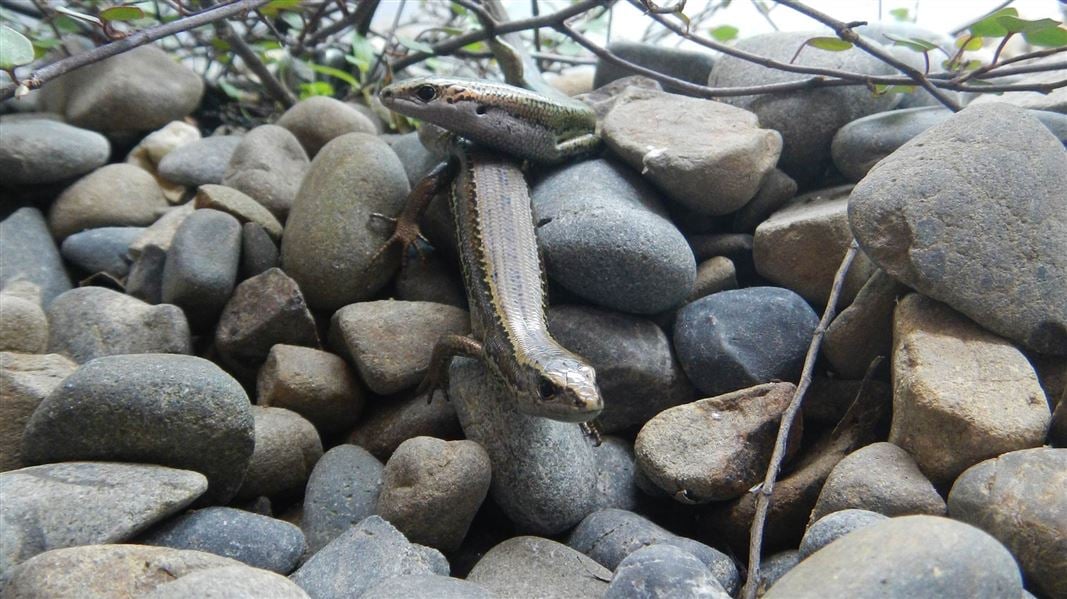
Introduction
Cobble skinks were discovered in 2007 at a tiny beach near Westport.Population: (2024) >20,000 individuals
National status: Endemic
Conservation status: Nationally Critical (under review)
Cobble skink conservation
Cobble skink (Oligosoma aff. infrapunctatum "cobble”) were first discovered in 2007, and live only along a 10km stretch of coastline north of Westport.
The species looks very similar to the closely related Newmans speckled skink, found in neighbouring habitat. Cobble skink had been overlooked by herpetologists because of this similarity.
Despite the looks, cobble skinks are very different from other species. They prefer the deep cobble habitat found immediately above the high tide mark, and appear to be adapted to wriggling through the spaces between cobbles.
When first discovered cobble skinks were thought to be restricted to a tiny area but were apparently abundant there. It's likely the deep cobble structure provides some protection from introduced predators, which are impacting on skink populations outside of this specialist habitat.
Did you know?
This small skink is very agile and can quickly disappear into the small spaces between cobble.
Habitat loss and predation
Climate change, storm events and rising sea levels are having variable levels of impact along the species distribution. More frequent and intense storm events erode their preferred habitat above the high tide line.
Coastal development and coastal erosion protection works also destroy habitat, as do vehicles and fire.
It’s expected that mice are a significant predator, but rats, mustelids, cats, and the native weka may also be preying upon skinks.
Emergency rescue
Eight years after discovery, the skink population at the only known site had declined significantly, due to loss of known habitat from coastal erosion.
Imminent storms and ongoing erosion of this tiny habitat led DOC to carry out an emergency salvage operation in the winter of 2016.
36 skinks were rescued and flown to Auckland Zoo, in order to create an insurance population from extinction and a captive breeding programme to facilitate re-introductions. These were thought to be perhaps the entire remaining population of this species. DOC and Auckland Zoo are now working together to return the captive population of these precious West Coast endemics to their natural home in 2025.
New discoveries
In 2021 a new population of Cobble skink was discovered by local DOC staff. Several years of monitoring at this site has confirmed a large wild population exists here and two new small populations have also been discovered.
Although the situation for the species has become brighter since the discovery of a significant wild population, the future for this species is still threatened given its small range and the exposure of their habitat to coastal erosion, development and sea level rise..
You can help
Beach ecosystems are fragile and often contain important and secretive species. Avoid driving on the beach, lighting fires, or removing driftwood to help protect these areas.